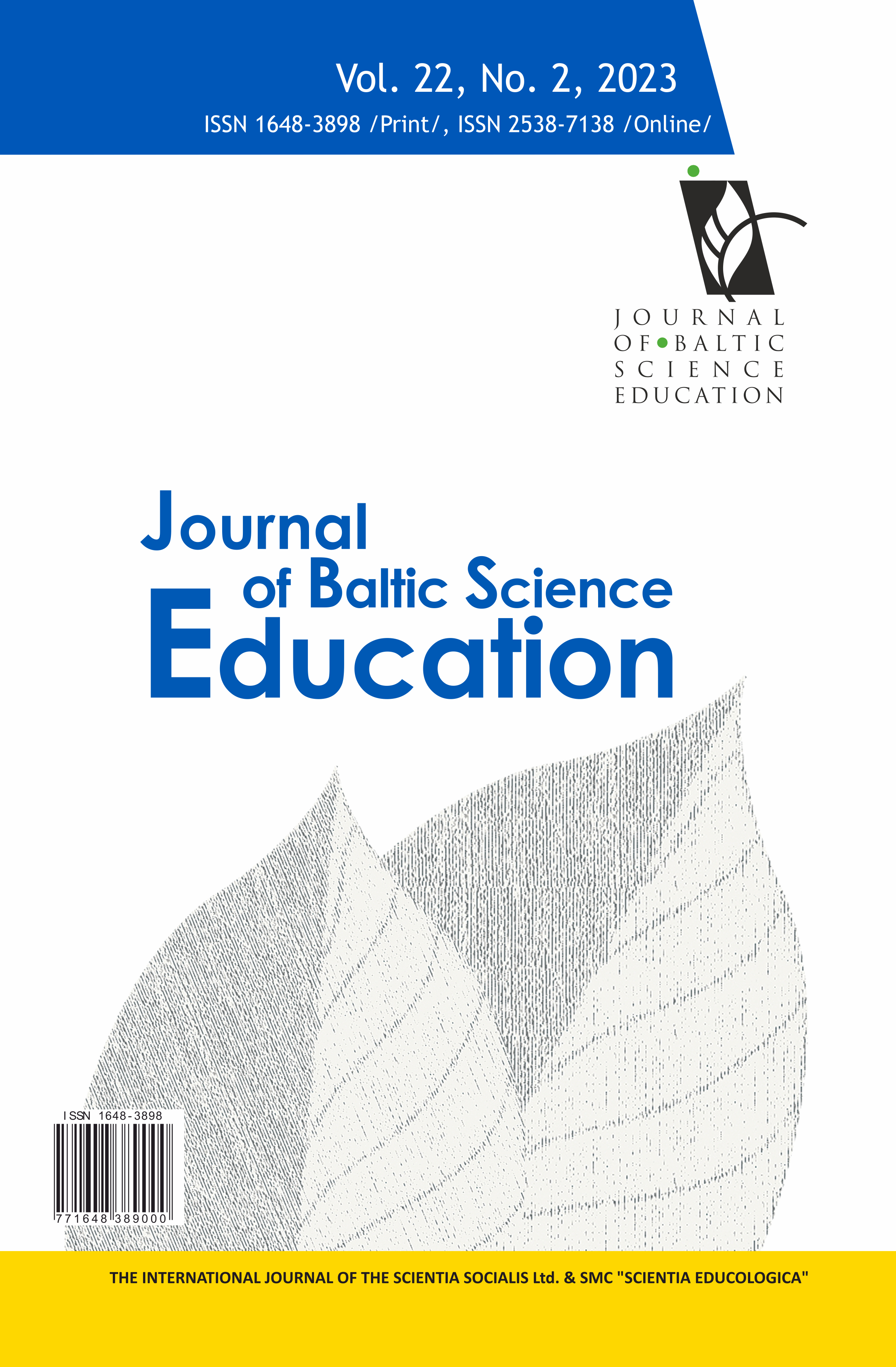THE THINKING OF STUDENTS AGED 15-18 IN EXPLAINING THE DISSOLUTION PHENOMENON
THE THINKING OF STUDENTS AGED 15-18 IN EXPLAINING THE DISSOLUTION PHENOMENON
Author(s): Guanxue Shi, Shanshan Lu, Hualin BiSubject(s): Social Sciences, Education
Published by: Scientia Socialis, UAB
Keywords: core ideas understanding; causal reasoning; dissolution phenomenon; small-sample qualitative study;
Summary/Abstract: Explaining natural phenomena by determining causal relationships is conducive to understanding scientific concepts. In science education, numerous studies examine students' causal reasoning. Given the importance of core ideas for students’ understanding of how and why a phenomenon occurs, the study focused on the relationship between students' understanding of atoms/molecules interactions and the nature of reasoning. This study drew on a framework that identifies essential components of students' reasoning, which was used to analyze the dissolution phenomenon in the example of salt in water. Students in grades 9-12 (N=147) explained the dissolution of salt. The results showed that there were five types of reasoning: simple descriptive, fuzzy causal, linear causal, interactive causal, and mechanistic. More students in higher than lower grades exhibited non-causal reasoning. Based on the students' drawings of atoms/molecules interactions, the study summarized performance in the association category. Students’ performance in drawing indicated that their understanding of particle interactions was limited. The results showed that there was a large correlation between understanding of the core ideas and reasoning types.
Journal: Journal of Baltic Science Education
- Issue Year: 22/2023
- Issue No: 2
- Page Range: 337-356
- Page Count: 20
- Language: English

